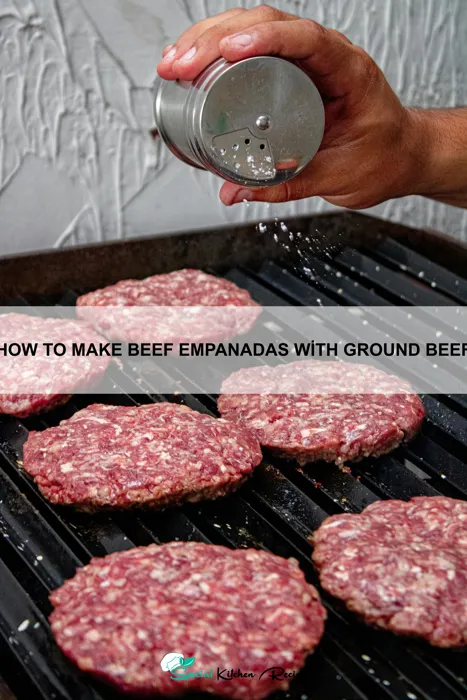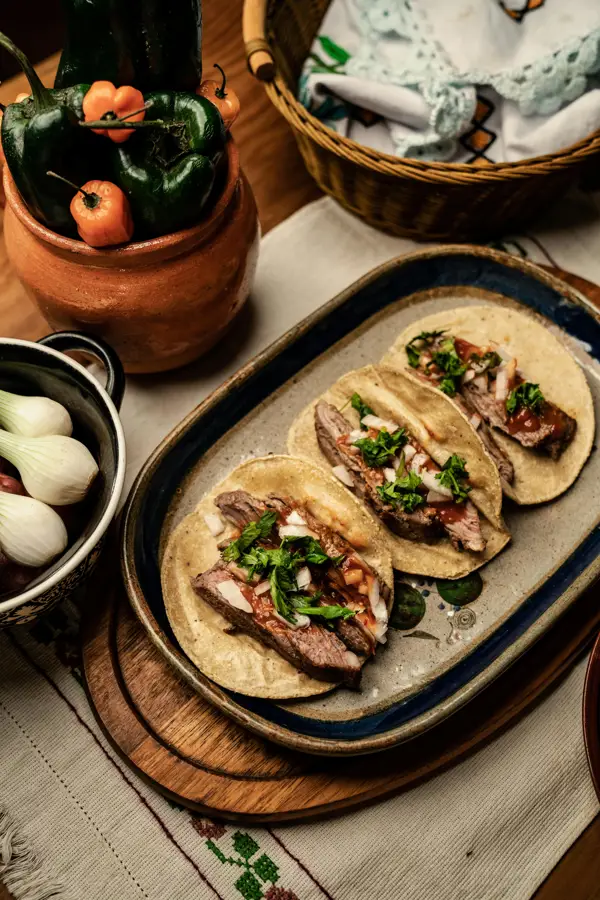Prepare to embark on a culinary journey to South America, where we’ll uncover the secrets to crafting delicious beef empanadas. These savory pastries, beloved across Latin America and beyond, boast a rich history and cultural significance that extends far beyond their delectable taste. Empanadas, meaning wrapped in bread in Spanish, have roots stretching back centuries, with evidence suggesting variations existed in the Iberian Peninsula before Spanish colonization of the Americas. Their evolution is a fascinating blend of indigenous ingredients and techniques with European baking traditions, resulting in the diverse regional styles we see today.
The exact origin of the empanada is debated, but many believe its ancestor is the Cornish pasty from England. However, the empanada as we know it truly flourished in South America, adapting to local flavors and ingredients. In Argentina, for example, empanadas are a national staple, consumed at virtually every social gathering and often competing with pizza as the most popular street food. In fact, it’s estimated that Argentinians consume billions of empanadas annually! This highlights their deep integration into the social fabric and daily lives of Argentinians and other Latin American cultures.
The cultural significance of the empanada extends beyond mere sustenance. They are frequently associated with special occasions, family gatherings, and celebrations. Regional variations showcase the creativity and diversity of Latin American cuisine, with fillings ranging from the classic ground beef we’ll be preparing today to more adventurous combinations incorporating seafood, vegetables, or even spicy cheeses. Each bite is a testament to centuries of culinary heritage, reflecting the fusion of cultures and the enduring appeal of simple, yet profoundly satisfying, food. Let’s delve into the recipe and discover the magic of making your own authentic beef empanadas.
Ingredients and Measurements
This recipe yields approximately 12 delicious beef empanadas. Accurate measurements are crucial for achieving the perfect balance of flavors and texture. Use a kitchen scale for the most precise results, especially when measuring flour and fats.
For the Empanada Dough:
- 3 cups all-purpose flour (400g), plus more for dusting. Using a higher protein flour will result in a more robust dough.
- 1 teaspoon salt (5g). Sea salt or kosher salt are recommended for their superior flavor.
- 1 cup (2 sticks, 227g) cold unsalted butter, cut into small cubes. Ensure the butter is very cold for a flaky crust. Using a pastry blender or your fingertips, cut the butter into the flour until it resembles coarse crumbs.
- 1/2 cup (120ml) ice water. Add gradually, mixing until the dough just comes together. Do not overmix, as this will develop the gluten and result in a tough crust.
For the Beef Filling:
- 1 large onion (approximately 150g), finely chopped. Yellow or white onions work well.
- 2 cloves garlic (approximately 5g), minced. Fresh garlic provides the best flavor.
- 1 pound (450g) ground beef. Use a lean ground beef (at least 80% lean) to prevent an overly greasy filling. Higher fat content can be compensated by draining excess grease after browning.
- 1 (14.5 ounce) can diced tomatoes, undrained (approximately 410g). Use fire-roasted diced tomatoes for a deeper, richer flavor.
- 1/2 cup (70g) chopped green bell pepper. Adds a nice sweetness and crunch.
- 1/4 cup (30g) chopped fresh cilantro. Adds freshness and vibrancy to the filling.
- 1 teaspoon ground cumin (3g). Essential for authentic empanada flavor.
- 1/2 teaspoon ground oregano (2g). Another key spice for the filling.
- 1/4 teaspoon cayenne pepper (1g), or to taste. Adjust to your preferred level of spiciness.
- 1/4 cup (60ml) beef broth. Helps create a moist filling.
- Salt and black pepper to taste. Season generously throughout the process.
- 1 large egg (approximately 50g), beaten. For egg wash.
Optional additions: Consider adding a tablespoon of sofrito or a teaspoon of paprika to further enhance the flavor of your filling.
Equipment List
Making delicious beef empanadas requires the right tools to ensure efficiency and a professional finish. This equipment list details everything you’ll need, from preparation to baking. Having everything ready beforehand will streamline the process and prevent interruptions.
For Dough Preparation: You’ll need a large mixing bowl (at least 5-quart capacity) for combining the dough ingredients. A sturdy pastry blender or your fingertips are ideal for cutting in the shortening or lard. A reliable rolling pin, approximately 18 inches long, ensures even dough thickness. A clean work surface, preferably a lightly floured countertop or a silicone baking mat, is essential for rolling out the dough. A pizza cutter or sharp knife will be used for trimming and cutting the empanada circles. A pastry brush (2 inches wide) will be needed for egg wash.
For Filling Preparation: A large skillet (12-inch diameter) is perfect for browning the ground beef. A wooden spoon or spatula will be necessary for stirring and breaking up the meat. Measuring cups and spoons are essential for precise ingredient measurements. A large bowl (at least 4-quart capacity) is needed to combine the cooked beef with the other filling ingredients. A fine-mesh sieve is recommended to strain any excess liquid from the cooked beef, contributing to a drier, more flavorful filling.
For Assembly and Baking: A baking sheet, ideally a half-sheet pan (approximately 12×18 inches), is necessary for baking. Parchment paper is highly recommended to prevent sticking and for easier cleanup. A fork will be used to crimp the empanada edges for a neat and professional seal. You’ll need a small bowl for the egg wash (1 large egg beaten with 1 tablespoon of water). If you are using a silicone baking mat, a spatula or a thin metal scraper helps with transferring the finished empanadas.
Optional but Recommended Equipment: An empanada press can significantly speed up the assembly process and create uniform empanadas. A meat thermometer guarantees the ground beef is cooked to a safe internal temperature of 160°F (71°C). A cooling rack allows for proper cooling of the empanadas after baking, preventing sogginess.
Cleaning and Storage: Remember to have dish soap and plenty of warm water readily available for cleaning your equipment after use. Appropriate storage containers are also needed to store any leftover empanadas. Proper hygiene throughout the cooking process is crucial.
Dough Preparation (including resting time)
Making the perfect empanada dough requires precision and patience. We’ll be creating a classic, flaky dough that holds its shape beautifully. Begin by gathering your ingredients: 3 cups all-purpose flour (plus extra for dusting), 1 teaspoon salt, 1 cup (2 sticks) unsalted butter, chilled and cubed, and ½ cup ice water. Ensure your butter is very cold; this is crucial for achieving a flaky texture.
In a large bowl, whisk together the flour and salt. Cut the cold butter into the flour mixture using a pastry blender or your fingertips. Work quickly to prevent the butter from melting. The goal is to incorporate the butter into the flour until the mixture resembles coarse crumbs with some pea-sized pieces of butter remaining. Avoid overmixing at this stage; overworking the dough will result in a tough crust.
Gradually add the ice water, one tablespoon at a time, mixing gently with a fork until the dough just comes together. Do not add more water than necessary. The dough should be slightly shaggy and not overly sticky. If it’s too sticky, add a tablespoon more of flour. Once the dough is formed, turn it out onto a lightly floured surface and gently gather it into a ball.
Flatten the dough into a disc about ½ inch thick. Wrap the disc tightly in plastic wrap and refrigerate for at least 30 minutes, or preferably 1 hour. This resting period allows the gluten to relax, resulting in a more tender and manageable dough. The chilling also firms up the butter, contributing to a flakier crust after baking.
After the resting period, lightly flour your work surface and gently roll out the dough to your desired thickness (approximately ⅛ inch). Avoid excessive rolling, as this can make the dough tough. Use a 4-5 inch cookie cutter or a knife to cut out circles for your empanadas. If the dough becomes too difficult to work with, simply re-wrap it and return it to the refrigerator for a short time before continuing.
Pro Tip: For an even easier rolling process, consider dividing the dough in half before chilling. This makes handling the dough much simpler. Remember to keep your work surface and rolling pin lightly floured to prevent sticking.
Beef Filling Preparation (including browning and seasoning)
The success of your beef empanadas hinges on a flavorful and well-seasoned filling. We’ll start by browning the ground beef to remove excess fat and develop a rich depth of flavor. For this recipe, we’ll use 1 pound of ground beef (80/20 blend is recommended for optimal juiciness).
Begin by heating 2 tablespoons of olive oil in a large skillet over medium-high heat. Once the oil is shimmering, add the ground beef. Avoid overcrowding the pan; work in batches if necessary to ensure proper browning. Using a wooden spoon or spatula, break up the beef as it cooks, creating smaller pieces for even cooking and better distribution of flavors throughout the filling.
Cook the beef, stirring occasionally, until it’s browned and loses its pink color, about 8-10 minutes. Drain off any excess grease using a slotted spoon or colander. This step is crucial for preventing a greasy filling. Leaving some fat in the pan will add richness and flavor, so don’t drain excessively.
Now it’s time to build the flavor profile of your filling. Add 1 medium yellow onion, finely chopped, and 1 green bell pepper, also finely chopped, to the skillet. Sauté for about 5-7 minutes, until softened and slightly translucent. Don’t rush this step; allowing the vegetables to cook properly will enhance their sweetness and contribute to a more flavorful filling.
Next, we’ll incorporate the seasoning. Add 1 teaspoon of ground cumin, 1/2 teaspoon of smoked paprika, 1/4 teaspoon of cayenne pepper (optional, for a touch of heat), 1 teaspoon of dried oregano, 1/2 teaspoon of garlic powder, 1/4 teaspoon of salt, and 1/4 teaspoon of black pepper. Adjust the seasoning to your taste. Stir everything thoroughly to combine and coat the beef and vegetables evenly. Cook for another 2-3 minutes, allowing the spices to bloom and infuse the filling with their aromas.
Finally, stir in 1/2 cup of beef broth or water to create a slightly moist filling. Simmer for 5 minutes, allowing the flavors to meld and the liquid to reduce slightly. Remove from heat and let the filling cool completely before filling your empanada dough. This prevents the dough from becoming soggy.
Assembling the Empanadas (including crimping techniques)
Once your dough is ready and your filling is perfectly seasoned, it’s time to assemble the empanadas. This is where your attention to detail will truly shine! We’ll be making approximately 12 empanadas from a typical batch of dough, but adjust based on your dough and filling quantities.
Begin by rolling out your dough on a lightly floured surface to about 1/8 inch thickness. Use a 4-inch cookie cutter or a knife to cut out even circles. Ensure your dough is not too sticky; add more flour if needed, but avoid over-flouring, as this can make the dough tough.
Place approximately 2-3 tablespoons of the beef filling into the center of each dough circle. Don’t overfill! Overfilling will lead to messy, burst empanadas. Leave about a half-inch border around the filling.
Now for the crimping! This is where you can get creative, but here are a few reliable techniques: The simplest method is a half-moon fold. Fold the dough circle in half, forming a half-moon shape. Press firmly along the edges to seal, working your way around the entire perimeter. Use a fork to crimp the edges, creating a decorative pattern and ensuring a tight seal. This prevents leaks and maintains the empanada’s shape during baking.
For a more elaborate crimp, try the pleating technique. Instead of a simple fold, bring one edge of the dough over the filling, then pinch and fold it over in small pleats, working your way around the circumference. This requires a bit more practice, but creates a beautiful, rustic look.
Alternatively, you can use a simple pinching method. Pinch the edges together all the way around the filling to create a sealed edge. This is a quick method, but might require more attention to ensure a complete seal. Regardless of the method you choose, ensure the edges are tightly sealed to prevent the filling from escaping during baking.
Once all your empanadas are assembled, place them on a baking sheet lined with parchment paper. This prevents sticking and makes cleanup much easier. Brush the tops of the empanadas with a beaten egg wash (one egg lightly beaten with a tablespoon of water) for a golden-brown finish.
Bake according to your recipe’s instructions, typically at 375°F (190°C) for 20-25 minutes, or until golden brown and the filling is heated through. Let them cool slightly before serving and enjoy your delicious homemade beef empanadas!
Baking or Frying the Empanadas (including temperature and time)
Once your empanadas are assembled and ready, you have two delicious options for cooking them: baking or frying. Both methods yield fantastic results, but offer slightly different textures and flavors. Choose the method that best suits your preference and equipment.
Baking Empanadas: This method results in a crispier, less greasy empanada. Preheat your oven to 400°F (200°C). Line a baking sheet with parchment paper to prevent sticking. Arrange the empanadas on the baking sheet, leaving some space between each one for even browning. Bake for 20-25 minutes, or until the crust is golden brown and the filling is heated through. You can flip them halfway through for more even cooking, but it’s not strictly necessary. Keep a close eye on them during the last 5 minutes to prevent burning.
Frying Empanadas: Frying produces a richer, flakier, and slightly softer crust. This method requires a bit more attention to detail. Heat about 2 inches of vegetable oil in a large, heavy-bottomed skillet or deep fryer to 350°F (175°C). Use a thermometer to accurately monitor the oil temperature; this is crucial to prevent burning and ensure even cooking. Carefully place the empanadas in the hot oil, working in batches to avoid overcrowding the pan. Overcrowding will lower the oil temperature and result in soggy empanadas. Fry for 3-4 minutes per side, or until golden brown and crispy. Remove the empanadas with a slotted spoon and place them on a wire rack lined with paper towels to drain excess oil. Avoid overcrowding the rack as this will steam the empanadas and make them less crispy.
Important Considerations for Both Methods:
- Don’t overfill the empanadas: Overfilling can lead to bursting and leaking during cooking.
- Crimp the edges securely: A tight crimp prevents filling from escaping and ensures a beautiful presentation.
- Adjust cooking time as needed: Oven temperatures and oil temperatures can vary, so keep a close eye on your empanadas and adjust the cooking time accordingly. Larger empanadas will require slightly longer cooking times.
- Let them cool slightly before serving: This allows the filling to set and prevents burns.
Enjoy your homemade beef empanadas! Whether baked or fried, they’re sure to be a delicious treat.
Recommendations
For the best flavor, allow the empanadas to rest for at least 15 minutes after cooking. This allows the filling to set and the pastry to cool slightly, making them easier to handle and enjoy. Serve immediately for the crispiest results.
Leftover empanadas can be stored in an airtight container in the refrigerator for up to 3 days. To reheat, you can bake them in a preheated oven at 350°F (175°C) for about 10-15 minutes, or until heated through. Microwaving is not recommended as it may make the pastry soggy. You can also gently reheat them in a skillet over medium heat for a crispy exterior.
These beef empanadas pair wonderfully with a variety of complementary dishes. A refreshing side salad with a light vinaigrette would cut through the richness of the filling. A simple chimichurri sauce adds a vibrant herbaceous touch, while a spicy salsa provides a nice contrast in flavor and texture. Consider serving them with a side of Mexican rice and refried beans for a complete and satisfying meal.
Approximate Nutritional Information (per empanada, values may vary based on ingredients used): Calories: 300-350, Fat: 15-20g, Saturated Fat: 5-8g, Cholesterol: 50-70mg, Sodium: 300-400mg, Carbohydrates: 30-40g, Fiber: 2-4g, Sugar: 2-5g, Protein: 10-15g. These are estimates and may vary depending on the specific ingredients and portion sizes used. For a more accurate nutritional analysis, use a nutrition calculator with your precise recipe details.
Pro Tip: Don’t overcrowd the pan when frying or baking the empanadas. This ensures even cooking and prevents them from becoming soggy. Experiment with different fillings to customize your empanadas! Consider adding vegetables like onions, peppers, or corn to the ground beef for added flavor and nutrition.





